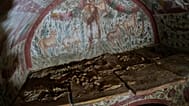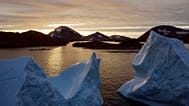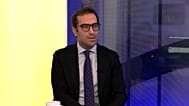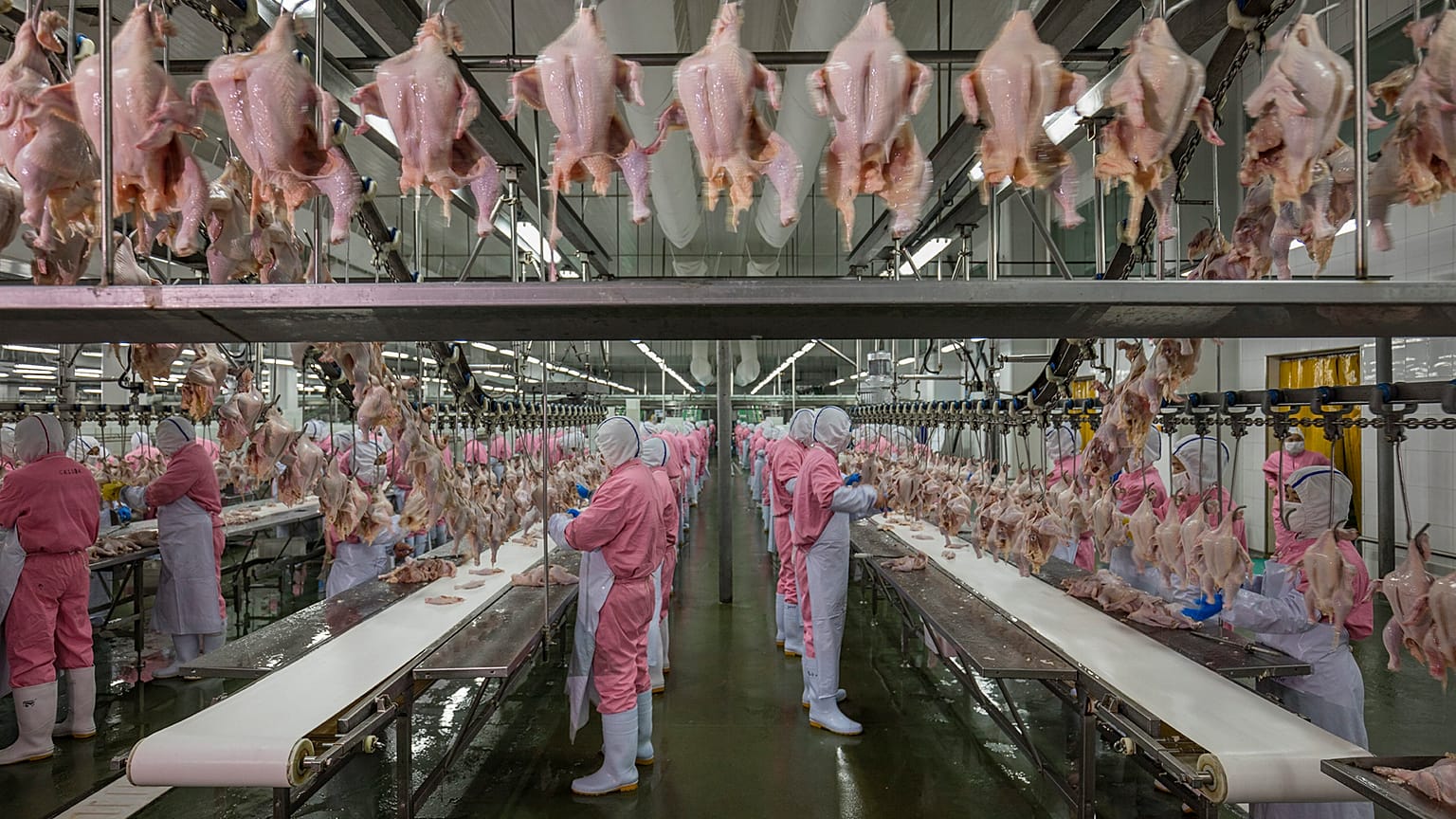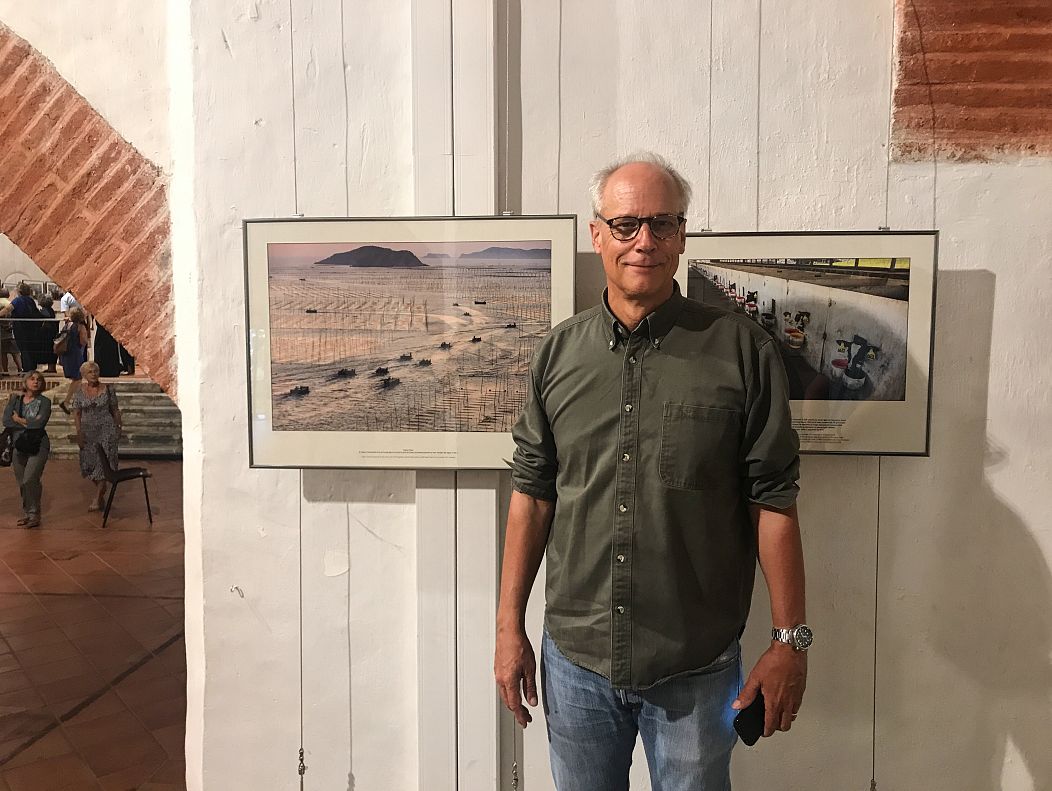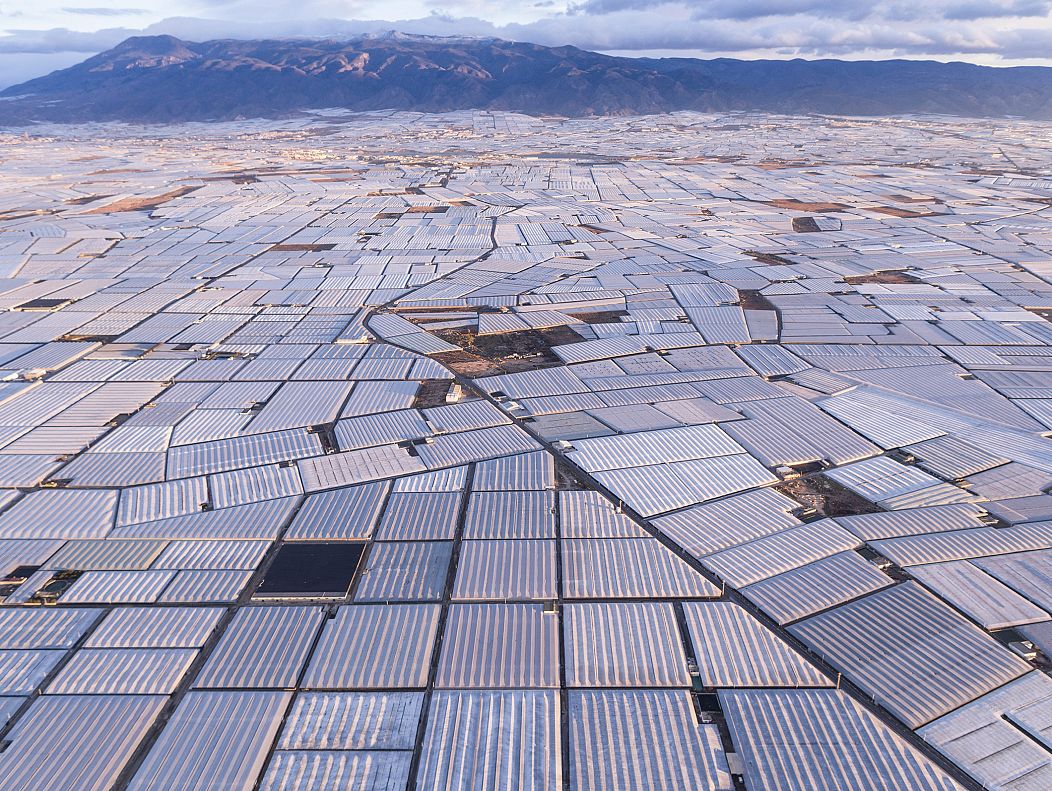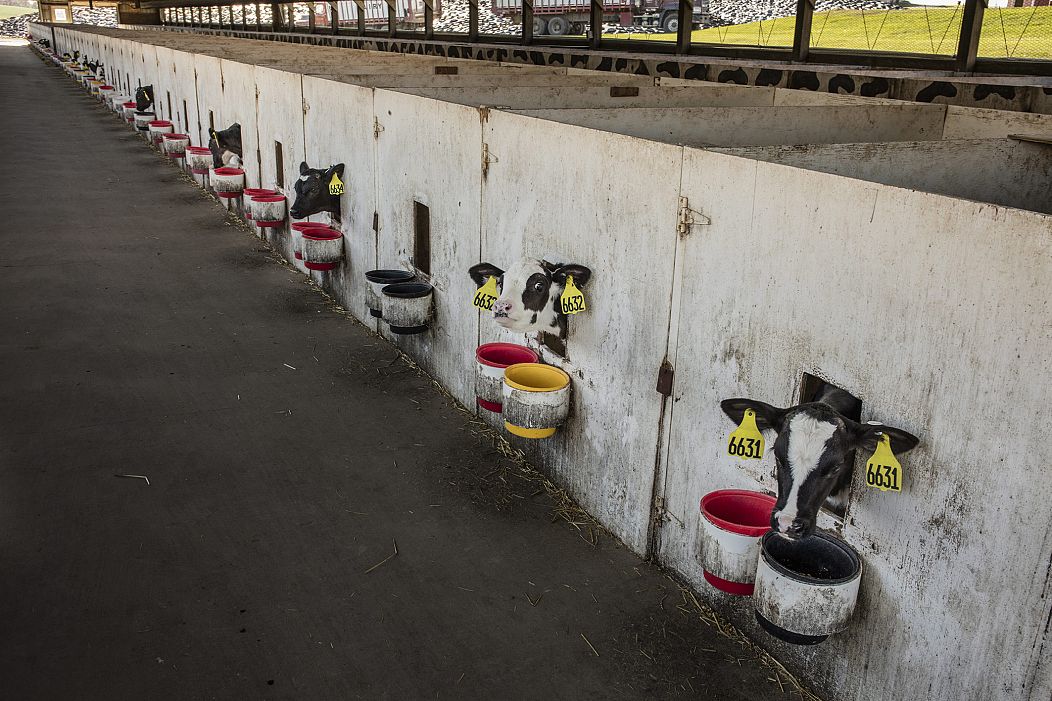Euronews spoke to renowned American photographer George Steinmetz whose pictures tell the true story of an industry that remains invisible to many consumers.
Farmland already covers some 40% of all land on Earth and as the global population continues to grow, the food production industry is only getting bigger.
Renowned American photographer George Steinmetz wants people to realise the environmental issues that arise from food production and how diet choices they make can have far-reaching consequences.
His candid photographs, often shot with a drone or from a motorised paraglider, open the doors to an industry that remains invisible to many consumers — pigs confined in cages; chicken facilities that process 10,000 birds an hour; and family farms that use modern technology to improve productivity.
Euronews spoke to Steinmetz at Visa pour l’image, an annual photojournalism festival that takes place in the southern French town of Perpignan.
While insisting he is not a campaigner, the photographer confesses his own eating habits have changed since he started working on the project:
Euronews: Animals caged for life and plants grown with very little resources — after working on this project for years, does technology appear good or evil to you?
George Steinmetz: I do not think technology is evil. I think it's reality and it's about efficiency. There are aspects of efficiency that are wonderful and there are also aspects of it that can be very cold and heartless.
Euronews: How does it feel, though, to see all this large-scale production?
George Steinmetz: Emotionally it's very disturbing. As a journalist, I see that and think: “Oh, it's a good picture.” That's the story that has an emotional impact for people. At the same time, the more efficiently we can produce food, the less impact we will have on the ecology of our planet. So It's complicated — if we can use less land or less water, then there is more water and land for the natural environment, which is a wonderful thing.
Euronews: To what extent is this technology and large-scale production about ecological sustainability? Is it totally about making money?
George Steinmetz: It's about money, economics and efficiency. In ancient times almost all of humanity's efforts were spent gathering food and now other people are actually making your food. We are free to do other things. So to say you're anti-technology is like you want to go back to hunting and gathering.
At the same time, it's appropriate to have some kind of regulation that we consider, notably about animal welfare. We can say that we don’t want chickens spending all their lives in cages, it’s inhumane, the chicken farmer will say: “OK, but it’s going to cost more”. This way chickens outside are going to attack each other, mortality is going to be higher, so this means lower efficiency.
We can also try to say that it’s OK to keep animals in cages, as it leaves more space for wildlife. These are really difficult decisions, but I think it's a conversation we have to have. And to begin this conversation we have to see how these operations are taking place.
Euronews: Isn’t it the job of politicians to come up with the decisions and regulate the market?
George Steinmetz: I think it's better actually to let the market choose, but you have to know what you are eating. We need to have this information, sometimes it’s not available.
Euronews: Did this project change your personal eating habits?
George Steinmetz: It did, but it’s complicated: I travel a lot. When I do have a choice I get organic food and cage-free chickens.
Another question is what to consider organic because under the US law, for example, you can have a free-range chicken label on your food and all that means is that the producers have to leave the door open to a chicken house. The door was never opened until the chickens were already mature. And they don’t even go out of that door. So there is really not that much difference, but they charge more.
Euronews: How do you get rights to fly over farms and other territories?
George Steinmetz: I don’t ask for permission because if you ask someone you are giving them right to say no. The airspace is free. If they don't like it, they should put a roof on it but I'm not invading their space.
Euronews: But you can't fly the drone wherever you want?
George Steinmetz: I kind of can. The laws are different everywhere. Generally, as a photographer, I take pictures first and ask questions later.
Euronews: So how often you get sued?
George Steinmetz: I haven't. I got arrested in Kansas but they have dropped it. They had to drop their case — they had no case.
Euronews: You are most famous as an aerial photographer, but now everyone can fly a drone. How has the situation changed for you?
George Steinmetz: The paraglider is good because you can take it and land anywhere you want but now I am mostly using drones. Especially now because of this security hassle, it’s difficult to get all my flight equipment on the plane. Plus if there is a risk of being shot — I am a bigger target than a drone.
Euronews: Do you have images that mean most to you in this project?
George Steinmetz: From an emotional standpoint, it's probably most affecting when you go into animal situations, like a slaughterhouse, especially when it has to do with pigs because the pigs are smart. That’s quite affecting emotionally when you hear the screaming of pigs and everything. It’s a death camp.
I also like those images where you can see the scale of it. Like a picture from one of the biggest cattle field lots in America, and there you can see 150,000 cows and the enormity of what we are doing is very impressive to me.

